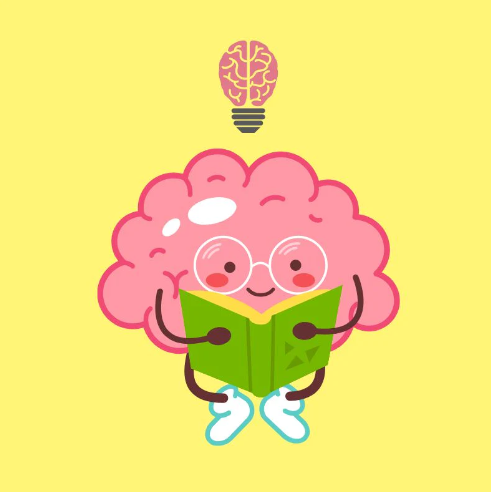
19
FebruarySeven Things You Didn't Know About Your Brain
The brain — the central “control unit” of our bodies,
repository of memories and emotions. Throughout history, philosophers have
believed that the brain may even house that intangible essence that makes us
human: the soul. What should we know about our brains?
Brain size can vary, depending on age, sex, and overall body mass.The
main organ of the human nervous system, the brain manages most of our bodies’
activities and processes information received from both outside and inside the
body and is the very seat of our emotions and cognitive abilities, including
thought, long- and short-term memory, and decision-making.
1. How big are our brains?
Brain size varies based on factors like age, sex, and overall body
mass, with the adult male brain averaging around 1,336 grams and the adult
female brain around 1,198 grams. While the human brain isn't the largest in
terms of dimensions, it boasts the highest number of neurons among all animals
on Earth. Traditionally estimated at 100 billion neurons, recent research by
Brazilian neuroscientist Suzana Herculano-Houzel, involving liquefying human
brains, suggests a revised count of approximately 86 billion neurons. The
method used challenges the conventional understanding of the brain's neuron
count.
2. What makes a brain?
The human brain makes up, alongside the spinal cord, the central
nervous system. The brain itself has three main parts:
-
the brainstem, which, like a plant’s shoot, is
elongated, and which connects the rest of the brain with the spinal cord
-
the cerebellum, which is located at the back of
the brain and which is deeply involved in regulating movement, motor learning,
and maintaining equilibrium
-
the cerebrum, which is the largest part of our
brains and fills up most of the skull; it houses the cerebral cortex (that has
a left and a right hemisphere separated by a long groove) and other, smaller
structures, all of which are variously responsible for conscious thought,
decision-making, memory and learning processes, communication, and perception of
external and internal stimuli
Brains are made of soft tissue, which includes gray and white matter,
containing the nerve cells, non-neuronal cells (which help to maintain neurons
and brain health), and small blood vessels.
They have a high water content as well as a large amount (nearly 60
percent) of fat.
3. How ‘hungry’ are our brains?
The human brain, despite its small size relative to the body, consumes
a significant amount of energy, utilizing 25 percent of the body's daily energy
expenditure. While much of this energy is devoted to sustaining ongoing
cognitive and bodily functions, studies on rat models suggest that a portion
may be allocated to maintaining the health of brain cells. James Kozloski
highlights the presence of highly active, inactivity-correlated networks in the
brain even during anesthesia, emphasizing a substantial energy investment in seemingly
idle states.
4. How much of our brains do we use?
The widely circulated myth that humans only use 10 percent of their
brain capacity is inaccurate. Brain scans reveal that the brain is active and
consuming energy even at rest, challenging the notion of untapped potential.
Neurologist Krish Sathian explains that the brain is constantly active, with
various regions engaged in different tasks.
If it were true that we only use 10 percent of the brain, then we
could presumably sustain damage to 90 percent of our brain, with a stroke or
something like that, and not experience any effects, and that’s clearly not
true.
5. Right- or left-brained?
The popular notion of being either right-brained or left-brained,
associated with personality traits and abilities, is largely inaccurate.
Internet quizzes claiming to determine dominance in one hemisphere are not
supported by scientific evidence. Research indicates that individuals use both
brain hemispheres equally, debunking the idea of a dominant side governing
personality. While the left hemisphere is more involved in language, the right
hemisphere focuses on nonverbal communication. The oversimplified
characterization of people as predominantly right-brained or left-brained lacks
scientific validity.
6. How do brains change with age?
As individuals age, natural brain shrinkage occurs, particularly in
the frontal lobe and hippocampus, impacting cognitive functions like memory.
Learning new things and multitasking may become more challenging in later
years. However, contrary to previous beliefs, research by Sandrine Thuret from
King's College London reveals that the hippocampus, crucial for learning and
memory, plays a significant role in generating new brain cells through
neurogenesis. Thuret suggests that, on average, adults produce around 700 new
neurons daily in the hippocampus, indicating ongoing neuron replacement
throughout adulthood. This challenges the misconception that neuron loss is
irreversible and offers a more optimistic perspective on brain health in aging
individuals.
7. Is perception ‘a controlled hallucination?’
The mystery of consciousness and perception in the human brain
captivates scientists and philosophers, with much remaining unknown. Professor
Anil Seth proposes that consciousness involves a "controlled
hallucination," where the brain combines sensory signals with prior
expectations to form informed guesses about the world. This explains phenomena
like optical illusions. Despite advancements, questions persist about how the
brain processes complex information. The marvel of the brain, enabling
perception and actions, often goes unnoticed in daily life. Seth's perspective
urges appreciation for the wonder of even the smallest actions, emphasizing the
ongoing quest to understand the intricacies of the human mind.


Reviews